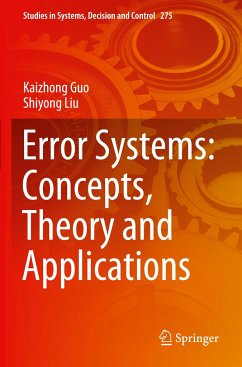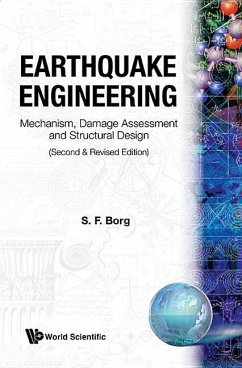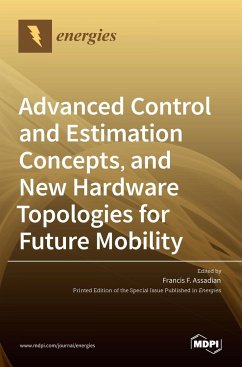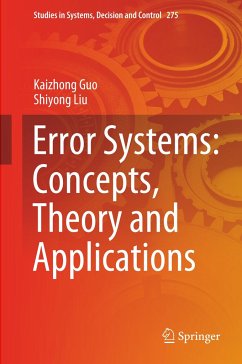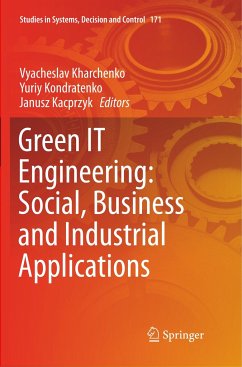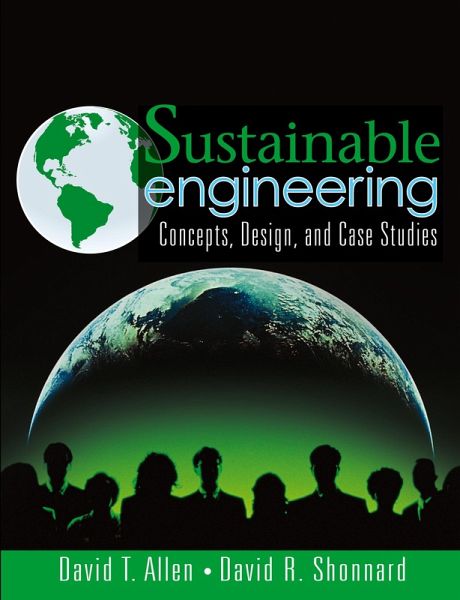
Sustainable Engineering: Concepts, Design and Case Studies
Versandkostenfrei!
Versandfertig in 1-2 Wochen
42,99 €
inkl. MwSt.

PAYBACK Punkte
21 °P sammeln!
Sustainable Engineering: Design and Analysis is the first textbook to offer a unified approach and comprehensive tools for evaluating and reducing the environmental impacts of engineering designs. It builds on the authors' comprehensive benchmarking study of the incorporation of sustainability concepts in engineering curricula, and integrates well-accepted principles and methods from their highly successful textbook, Green Engineering. David Allen and David Shonnard cover everything students and professionals need to improve sustainability in any engineering discipline. They integrate coverage of sustainability concepts and lifecycle principles, quantitative engineering design principles and methods, evaluation tools, case studies, industry perspectives, and more. Readers will learn how to utilize green materials, design green processes and products, and assess the economic value of green designs. Using this book, engineering faculty can bring greater coherence to their instruction on sustainability issues, easily integrating sustainability topics into existing courses. Note: This text condenses the new Second Edition of Green Engineering: Environmentally Conscious Design of Chemical Processes, also scheduled for publication in 2011. Product Description
Assessing Engineering Designs for Environmental, Economic, and Social Impact Engineers will play a central role in addressing one of the twenty-first century's key challenges: the development of new technologies that address societal needs and wants within the constraints imposed by limited natural resources and the need to protect environmental systems.
To create tomorrow's sustainable products, engineers must carefully consider environmental, economic, and social factors in evaluating their designs. Fortunately, quantitative tools for incorporating sustainability concepts into engineering designs and performance metrics are now emerging. Sustainable Engineering introduces these tools and shows how to apply them.
Building on widely accepted principles they first introduced in Green Engineering, David T. Allen and David R. Shonnard discuss key aspects of designing sustainable systems in any engineering discipline. Their powerful, unified approach integrates essential engineering and quantitative design skills, industry perspectives, and case studies, enabling engineering professionals, educators, and students to incorporate sustainability throughout their work. Coverage includes
A concise review of the natural resource and environmental challenges engineers face when designing for sustainability
Analysis and legislative frameworks for addressing environmental issues and sustainability
Methods for identifying green and sustainable materials
Principles for improving the sustainability of engineering designs
Tools for evaluating sustainable designs and monetizing their benefits
Features + Benefits
Builds on the well-accepted principles introduced by leading experts Allen and Shonnard in Green Engineering
Helps engineering educators incorporate sustainability into their curricula without adding separate courses
Offers a powerful unified approach that integrates case studies, industry perspectives, and essential engineering and quantitative design skills
The first text to provide comprehensive tools for evaluating environmental, economic, and societal impacts of engineering designs
There is a solutions manual available for download on the IRC for course use.
Preface ix Acknowledgments xi
About the Authors xiii
Chapter 1: An Introduction to Sustainability 1
1.1 Introduction 1
1.2 The Magnitude of the Sustainability Challenge 2
1.3 Energy 3
1.4 Materials Use 8
1.5 Environmental Emissions 13
1.6 Summary 27
Problems 28
References 32
Chapter 2: Risk and Life-Cycle Frameworks for Sustainability 35
2.1 Introduction 35
2.2 Risk 35
2.3 Life-Cycle Frameworks 42
2.4 Life-Cycle Assessment Tools 55
2.5 Summary 57
Problems 57
Appendix: Readily Available Hazard References 61
References 62
Chapter 3: Environmental Law and Regulation 65
3.1 Introduction 65
3.2 Nine Prominent Federal Environmental Statutes 68
3.3 Evolution of Regulatory and Voluntary Programs from End-of-Pipe to Pollution Prevention and Sustainability 72
3.4 Pollution Prevention Concepts and Terminology 73
3.5 Environmental Law and Sustainability 74
Problems 75
Appendix 77
References 89
Chapter 4: Green, Sustainable Materials 91
4.1 Introduction 91
4.2 Environmental and Natural Resource Use Footprints of Material Extraction and Refining 91
4.3 Tracking Material Flows in Engineered Systems 99
4.4 Environmental Releases 107
4.5 Summary 114
Problems 114
References 115
Chapter 5: Design for Sustainability: Economic, Environmental, and Social Indicators 117
5.1 Introduction 117
5.2 Sustainable Engineering Design Principles 118
5.3 Economic Performance Indicators 126
5.4 Environmental Performance Indicators 133
5.5 Social Performance Indicators 146
5.6 Summary 149
Problems 149
Appendix 151
References 160
Chapter 6: Case Studies 165
6.1 Introduction 165
6.2 Biofuels for Transportation 166
6.3 Transportation, Logistics, and Supply Chains 181
6.4 Sustainable Built Environments 186
6.5 Additional Case Studies 201
References 201
Index 207
Assessing Engineering Designs for Environmental, Economic, and Social Impact Engineers will play a central role in addressing one of the twenty-first century's key challenges: the development of new technologies that address societal needs and wants within the constraints imposed by limited natural resources and the need to protect environmental systems.
To create tomorrow's sustainable products, engineers must carefully consider environmental, economic, and social factors in evaluating their designs. Fortunately, quantitative tools for incorporating sustainability concepts into engineering designs and performance metrics are now emerging. Sustainable Engineering introduces these tools and shows how to apply them.
Building on widely accepted principles they first introduced in Green Engineering, David T. Allen and David R. Shonnard discuss key aspects of designing sustainable systems in any engineering discipline. Their powerful, unified approach integrates essential engineering and quantitative design skills, industry perspectives, and case studies, enabling engineering professionals, educators, and students to incorporate sustainability throughout their work. Coverage includes
A concise review of the natural resource and environmental challenges engineers face when designing for sustainability
Analysis and legislative frameworks for addressing environmental issues and sustainability
Methods for identifying green and sustainable materials
Principles for improving the sustainability of engineering designs
Tools for evaluating sustainable designs and monetizing their benefits
Features + Benefits
Builds on the well-accepted principles introduced by leading experts Allen and Shonnard in Green Engineering
Helps engineering educators incorporate sustainability into their curricula without adding separate courses
Offers a powerful unified approach that integrates case studies, industry perspectives, and essential engineering and quantitative design skills
The first text to provide comprehensive tools for evaluating environmental, economic, and societal impacts of engineering designs
There is a solutions manual available for download on the IRC for course use.
Preface ix Acknowledgments xi
About the Authors xiii
Chapter 1: An Introduction to Sustainability 1
1.1 Introduction 1
1.2 The Magnitude of the Sustainability Challenge 2
1.3 Energy 3
1.4 Materials Use 8
1.5 Environmental Emissions 13
1.6 Summary 27
Problems 28
References 32
Chapter 2: Risk and Life-Cycle Frameworks for Sustainability 35
2.1 Introduction 35
2.2 Risk 35
2.3 Life-Cycle Frameworks 42
2.4 Life-Cycle Assessment Tools 55
2.5 Summary 57
Problems 57
Appendix: Readily Available Hazard References 61
References 62
Chapter 3: Environmental Law and Regulation 65
3.1 Introduction 65
3.2 Nine Prominent Federal Environmental Statutes 68
3.3 Evolution of Regulatory and Voluntary Programs from End-of-Pipe to Pollution Prevention and Sustainability 72
3.4 Pollution Prevention Concepts and Terminology 73
3.5 Environmental Law and Sustainability 74
Problems 75
Appendix 77
References 89
Chapter 4: Green, Sustainable Materials 91
4.1 Introduction 91
4.2 Environmental and Natural Resource Use Footprints of Material Extraction and Refining 91
4.3 Tracking Material Flows in Engineered Systems 99
4.4 Environmental Releases 107
4.5 Summary 114
Problems 114
References 115
Chapter 5: Design for Sustainability: Economic, Environmental, and Social Indicators 117
5.1 Introduction 117
5.2 Sustainable Engineering Design Principles 118
5.3 Economic Performance Indicators 126
5.4 Environmental Performance Indicators 133
5.5 Social Performance Indicators 146
5.6 Summary 149
Problems 149
Appendix 151
References 160
Chapter 6: Case Studies 165
6.1 Introduction 165
6.2 Biofuels for Transportation 166
6.3 Transportation, Logistics, and Supply Chains 181
6.4 Sustainable Built Environments 186
6.5 Additional Case Studies 201
References 201
Index 207
Assessing Engineering Designs for Environmental, Economic, and Social Impact
Engineers will play a central role in addressing one of the twenty-first century s key challenges: the development of new technologies that address societal needs and wants within the constraints imposed by limited natural resources and the need to protect environmental systems.
To create tomorrow s sustainable products, engineers must carefully consider environmental, economic, and social factors in evaluating their designs. Fortunately, quantitative tools for incorporating sustainability concepts into engineering designs and performance metrics are now emerging. Sustainable Engineering introduces these tools and shows how to apply them.
Building on widely accepted principles they first introduced in Green Engineering, David T. Allen and David R. Shonnard discuss key aspects of designing sustainable systems in any engineering discipline. Their powerful, unified approach integrates essential engineering and quantitative design skills, industry perspectives, and case studies, enabling engineering professionals, educators, and students to incorporate sustainability throughout their work. Coverage includes
A concise review of the natural resource and environmental challenges engineers face when designing for sustainabilityAnalysis and legislative frameworks for addressing environmental issues and sustainability Methods for identifying green and sustainable materials Principles for improving the sustainability of engineering designs Tools for evaluating sustainable designs and monetizing their benefits
Engineers will play a central role in addressing one of the twenty-first century s key challenges: the development of new technologies that address societal needs and wants within the constraints imposed by limited natural resources and the need to protect environmental systems.
To create tomorrow s sustainable products, engineers must carefully consider environmental, economic, and social factors in evaluating their designs. Fortunately, quantitative tools for incorporating sustainability concepts into engineering designs and performance metrics are now emerging. Sustainable Engineering introduces these tools and shows how to apply them.
Building on widely accepted principles they first introduced in Green Engineering, David T. Allen and David R. Shonnard discuss key aspects of designing sustainable systems in any engineering discipline. Their powerful, unified approach integrates essential engineering and quantitative design skills, industry perspectives, and case studies, enabling engineering professionals, educators, and students to incorporate sustainability throughout their work. Coverage includes
A concise review of the natural resource and environmental challenges engineers face when designing for sustainabilityAnalysis and legislative frameworks for addressing environmental issues and sustainability Methods for identifying green and sustainable materials Principles for improving the sustainability of engineering designs Tools for evaluating sustainable designs and monetizing their benefits



